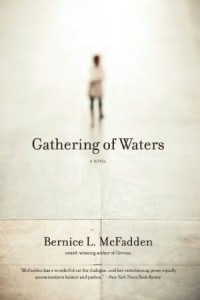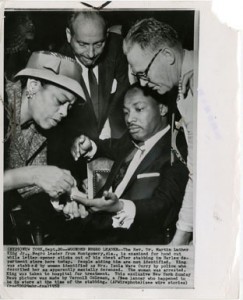We are always surprised when they appear. Made disquieted by the times, we may sense their approach, but their terrible acts still shock us. How could this happen here? What makes them? Sometimes they walk out of that part of the American landscape made toxic and lethal by cratered hopes and ideological madness, or by racial or ethnic hatred. Some possess storm-ridden minds beset by visions of immortality, troubled by voices we cannot hear or pushed by ambition to be the avenging spirit of the real America, however they imagine that nation. You know their names: Bremer, Sirhan, Oswald, Chapman, Hinkley, Guiteau, Sara Jane Moore, Squeaky Fromme, Timothy McVeigh, Booth, James Earl Ray.
It is hard to imagine what goes on inside them. Psychiatrists offer their arcane assessments. Sociologists and historians speak of complex causes and effects. Some analysts speak of evil, a description that may aptly describe the actions of a McVeigh, a Ray, an Oswald, but does not illuminate their interior lives. In spite of serious, learned explanations, they remain ghoulish — creatures standing absolutely still at the boundaries of the graveyard, contemplating our lighted windows. There may be some otherworldly sense at work in us that understands that they are a separate tribe from most others – call it a peculiar awareness or a moral shudder, and give it a physical form, a turning away from something unfamiliar and cold.
 Fiction and its use of metaphor has the power to offer an imaginative vision of them. In Gathering of Waters, Bernice McFadden tries to metaphorically decipher how the landscape gives forth these human beings and how actions of evil and goodness resonate. She describes the consequences involved: “… an evil act can ruin generations, and gestures of love and kindness will survive and thrive forever (252).”
Fiction and its use of metaphor has the power to offer an imaginative vision of them. In Gathering of Waters, Bernice McFadden tries to metaphorically decipher how the landscape gives forth these human beings and how actions of evil and goodness resonate. She describes the consequences involved: “… an evil act can ruin generations, and gestures of love and kindness will survive and thrive forever (252).”
She makes use of a kind of magic realism, a method of seeing the world that tries to understand its strangeness not as a product of science, but as an intersection of the material and the spiritual. These dark men and women arise as a product of dark spirits let loose among us whose actions create a perpetual motion of havoc and cruelty. In a sense they physically embody a form of the zeitgeist; they give it the hands and heart necessary to hate and to act upon that hatred. She imagines Esther, the whore of Tulsa, as the latest animating spirit of such hatred — the latest, not the first. In McFadden’s imagined universe cruelty begets cruelty; dark spirits create more such spirits: “They [men] beat the goodness and the sweetness out of her. They beat her into the streets, into the back alleys, down into the dust, into the gutter, onto her knees, her back and then they climbed on top and emptied their miseries inside her (24).” When she dies, the cruelty done to her, the cruelty that made her mean, goes on. It inhabits a child who then wreaks havoc on others around her. Cruelty begets more cruelty. One action spurs two, two four, four eight, eight sixteen. It travels over generations. When she dies, her cruelty resurrects a drowning victim, someone who when reanimated becomes J.W. Milam, the kind of human being who can kill a child, in this case Emmett Till.
McFadden’s fictional world tries to answer this question – how else can one explain the brutality and capricious choice involved in murdering a 14 year old boy for whistling? – all those centuries of race cruelty and hatred temper the spiritual climate that nurtures the poison.
 Now make the switch from a novel to life as it was lived by ML King and “… an itinerant Negro maid who had drifted alone for many years since leaving a broken home and a failed marriage (245).” *Izola Ware Curry is one of those who cross the boundaries that separate our fears from our daily reality. She walked out of the graveyard and entered the house.
Now make the switch from a novel to life as it was lived by ML King and “… an itinerant Negro maid who had drifted alone for many years since leaving a broken home and a failed marriage (245).” *Izola Ware Curry is one of those who cross the boundaries that separate our fears from our daily reality. She walked out of the graveyard and entered the house.
On September 20, 1958 she confronted King at a book signing and plunged a Japanese pen knife into his chest. The blade “grazed the aorta (244).” Doctors told him that “… a sneeze could have killed him (244).” She had “… a fully loaded Italian automatic …. (244)” * in her blouse. She told the police that she thought King was going to kill her. She disappears from history into the Matteawan State Hospital for the Criminally Insane. What if she had used the automatic? Or what if King had fallen, thus moving the blade, what if he had shuddered, once, only once? Sometimes grave matters of history turn on a breath.
Mrs. Curry steps out of a crowd, unannounced and wields the knife. The public mutters “lunatic”. Medicine says “mentally ill”. Both are almost certainly accurate descriptions. But why the intersection of Curry and King at the moment of his ascendancy? Fiction can take on the deep and muddy waters we can sense swirling around our waking, solid world and intimate other possibilities — call it a peculiar awareness or a moral shudder. When we feel it, we hurry to close the windows, to make fast the blinds, to bathe ourselves in light, to ignore the scratching of footsteps on the walk. I wonder what is walking towards us, what may be waiting outside our doors right now. These also are fearful times.
After Montgomery, King had become magnetized. Others, all kinds of others, now saw him as the mystical lodestone: “King was a hero, and as he spoke, representatives of other Negro organizations were rapping on the door (208).” *He spoke of trying to make the lessons and results of Montgomery national. He began to think dream big dreams – how to push white America toward a moral reckoning in its beliefs about race and justice. One successful action might lead to two, two to four …. Goodness also has a legacy.
Others, all kinds of others, also saw him as their blood enemy and they pursued him with prosecutions and bombs and shotgun blasts. Less than ten years later James Earl Ray, standing in a filthy bathroom, would shoot Dr. King with a 30.06 Remington rifle, but during those ten years, Dr. King kept working. He had ten more years to search for an antidote to the poison.
*Parting the Waters: America in the King Years 1954-1963 by Taylor Branch
Both books can be ordered/purchased from the Wellington Square Book Shop. Help save independent book stores.